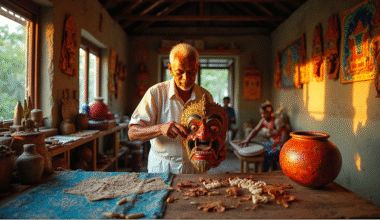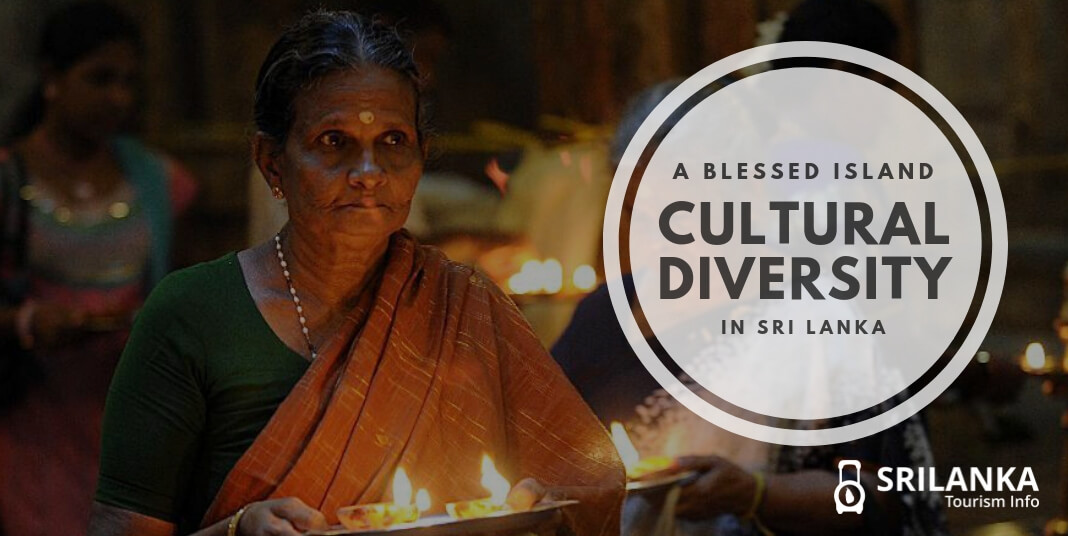Sri Lanka is a country that comprises a variety of ethnic groups. Every group has its own language, customs, religion and tradition. The people living in Sri Lanka are a mixed basket of Tamils, Tamils of Indian origin, Sinhalese, Muslims, Tribal-Veddas, Malay and Burghers.
The beauty of the country is that it is both modern as well as traditional. On one hand, you’ll find people that are conservative and scarred by the turmoil of the civil war and on the other, you’ll find people that are peace-loving and cosmopolitan.
These attributes make it very tough to judge what kind of a country Sri Lanka is.
While there are plenty of elites discussing share prices over lunch, a hundred kilometres away, you will find peasants wrapped in a single piece of cloth working through the flooded rice paddies and low land jungles.
In the southern province, you’ll find European expats and Sri Lankans opening swanky beach side villas while up-north, local Tamils work day and night in tea plantations for measly amounts.
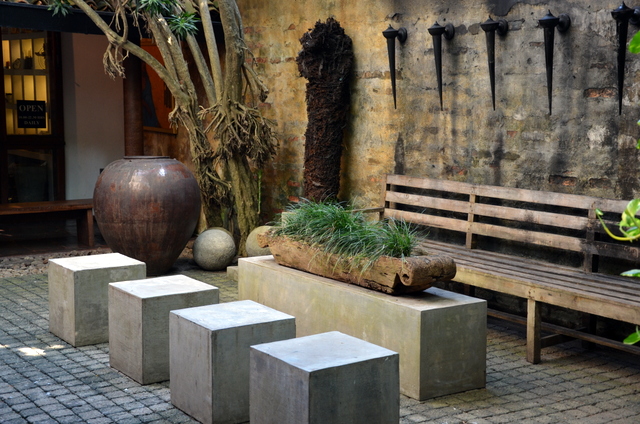
Meanwhile, in the chic cafés of Colombo, you’ll find the upper class of Sri Lanka wearing modern outfits and sharp suits. English is the most preferred language here. The people here are cosmopolitan and liberal contrary to the people working in rice paddies, Buddhist temples and fisheries.
Also Read: Sri Lanka- An Island Blessed with Cultural Diversity
Though Sri Lanka is modern, a large part of the country remains deeply rural. The local life of Sri Lankan men, women and children revolves around working in fields, visiting the local temple and having a square meal of rice and curry for lunch and dinner.
In the lower strata of Sri Lankan society, marriages are arranged after consultation with a professional astrologer. Despite the locals facing multiple hardships in everyday life in Sri Lanka, they possess a warm, friendly nature with ever-smiling faces, humble nature and the eagerness to help at any time. Sri Lankans are considered extremely hospitable and take pride in inviting people to their homes. They are extremely well-mannered and give high emphasis on family values.
Tea plantation workers in Sri Lanka
Tea and tourism play an integral part in the Sri Lankan economy. The island highly relies on cheap labour and thus most of the people working in tea plantations and tea gardens are the local inhabitants and Sri Lankan men and women that are financially weak and are striving day and night to make ends meet.
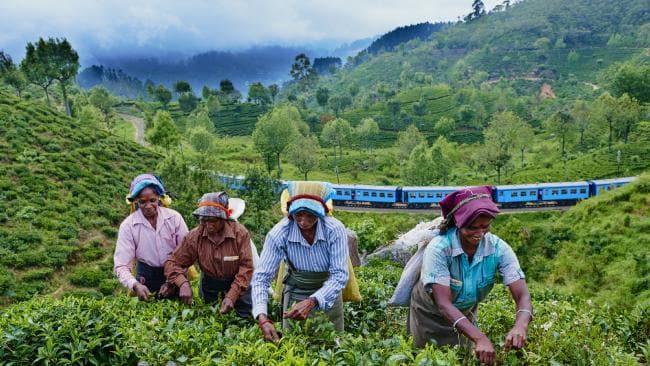
Here’s an overview of the daily life of a Sri Lankan tea worker:
Most of the people living in the rural regions of Sri Lanka are engaged in tea plantations.
There is a strong division between male and female professions in the country. Majority of the female population are not allowed to work. Their duty is to take care of the household chores and raise children. On the other hand, men are allowed to go out and work since they are the sole breadwinners of the family. However, with changing times, women have also started working. Not because they want to, but because they have to. Their poverty-ridden situation and misery leave them with no choice.

Instead of working in factories and industrial area, most Sri Lankan women choose to work in tea gardens or take up work as nurses in healthcare facilities.
Despite the women securing jobs in tea gardens, the shortcomings are plenty. There are no proper facilities covering education, health, economic conditions, drinking water and passenger transport.
However, the Sri Lankan government is working towards uplifting the lives of the Sri Lankan estate workers. Most of the tea farms and estates are in Nuwara Eliya and Bandarawela. The former is 125 kilometres from Colombo while the latter is 200 kilometres.
Approximately 1300 workers are employed in the plantation and live in the villages around. They make up Sri Lanka’s agricultural working class.
The daily life of Sri Lankan Families
The plantation workers live with their families in line rooms which are five or six small adjoining units. Each family lives in a house that is about 260 square feet. These dwellings were built by the British colonial planters for workers who were brought from South India at that time.
With the expansion of worker families, the tiny units had to be partitioned with brick walls to provide accommodation to married couples and their children. Sometimes, two or three families share a single line house. No doubt, the conditions faced by them are harsh and difficult.
Most families comprise of parents and their children. If the parents can afford basic education for their children, they send them to the public, government schools, and if they cannot; they just simply raise them at home.
However, most estate families do manage to send their children to school.
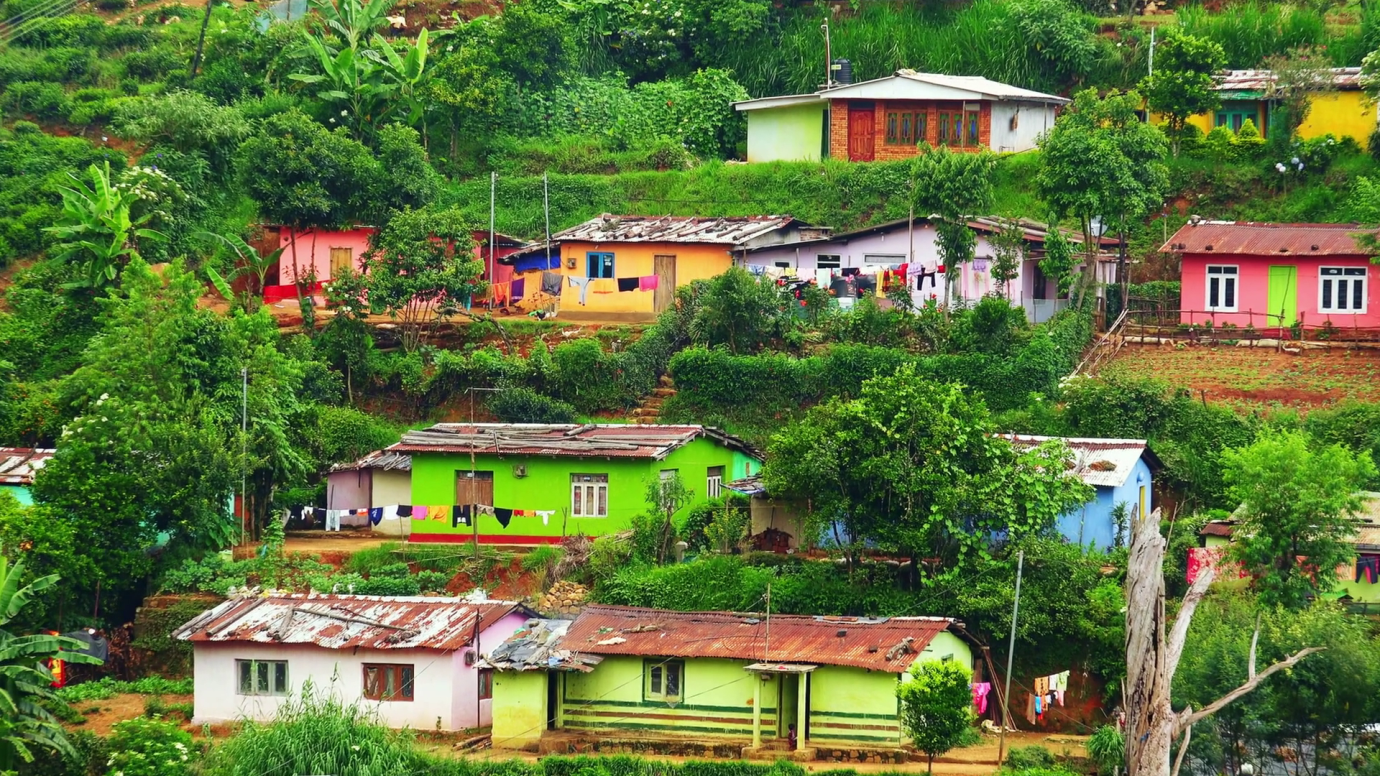
On a typical day, a tea plantation worker wakes up at 4:30 am in the morning so that he/she can report to work by 7:30 am. The morning usually involves preparing the day’s meals for the family and getting children ready for school.
Most of the estate workers children study in the same school. The children are required to walk more than one kilometer every morning and evening to reach their school. The reason behind this is that parents cannot afford school transport.
Their daily meal includes rice and a single curry. Kids are given milk in the morning as breakfast.
Once a worker reports to work, they begin plucking tea leaves at 8 am and continue all-day till 4:30 pm. Every worker is required to reach their target of plucking —18-20 kilograms of leaves per day. Besides the lunch break, no other break is provided. The supervisors howl at anyone taking a break during work for even a single minute. It is sad to see young and old women working so hard, but they have no choice because most of them are poverty and debt-ridden.
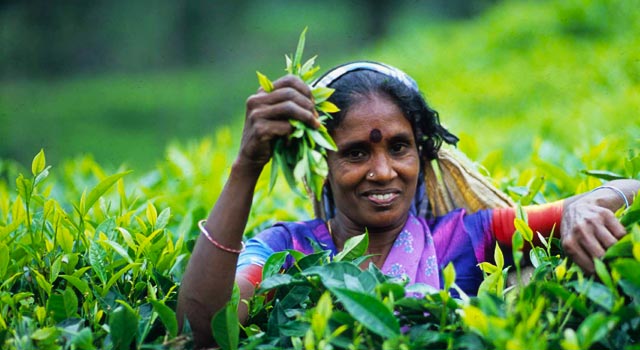
After a brief lunch break at noon, the workers are required to get back to work and continue meeting their harvest target for the day.
Early evening on their way home, they are required to collect firewood for cooking. Once they are home at about 5:30 pm, they start preparing dinner. This is the time most of the tea garden workers sit down with the rest of their family and children to have a shared meal.
Their day ends as they hit the sack at 9 pm, in order to start the same routine the following day.
Also Read: A Walk down the Sri Lankan Wedding Culture, Customs & Traditions
In the everyday life of a local Sri Lankan family, there are other hardships faced too. Some of them include:
- Drinking water: Every tea estate village has just a few water taps for the families living in every division. Most of these taps operate for just 1.5 hours. In order to collect water for their families, Sri Lankan women are forced to wait in queues. During the dry season, they have to walk to a nearby village to fill water. There is a major water problem faced by the Sinhalese villagers.
- Sanitation: The sanitary facilities in the village are also not up-to-the-mark. Two or three families share a single toilet. The healthcare facilities are substandard too.
- Education: Most Sri Lankan men and women living in villages are extremely poor and cannot afford education for their children. Most youths have to abandon their studies by 5th or 6th grade due to their poor economic status.
- Employment: As far as youth employment is concerned, children of estate workers have lost all hope of finding work in their parent’s estate. They instead have to take up menial jobs as waiters or helpers in restaurants and small shops respectively. Even for those working in tea plantations and fisheries, the wages are low.

There is no doubt that Sri Lankan people including men, women, and children living in villages and backward areas are living a very hard life. However, the government is looking at ways to uplift the condition of the oppressed and impoverished layers of the working class.
Despite all the hardships faced by the working class in Sri Lanka, it is amazing to see them smiling through it all. They are extremely courteous and go out of their way to help tourists visiting Sri Lanka.

If you ever take a trip to the island, consider making a visit to the Sri Lankan villages. The true culture and hospitality of the Sri Lankans can only be witnessed in the villages and remote areas. They may not be posh and lovely, but it actually brings you up-close and personal with the locals.
Also Read: Sri Lanka Travel-An experience like none
There are plenty of tea gardens that are open for tourist visits. Go to one of these and see the hard work with which every worker is plucking the leaves. The smiles on their faces speak nothing of their misery. They are warm, colourful and extremely welcoming.
Found this blog useful? Like, comment and share!
Have you ever lived with a local Sri Lankan family in a homestay? If yes, let us know your experience in the comment section below.
Image Source: Google


